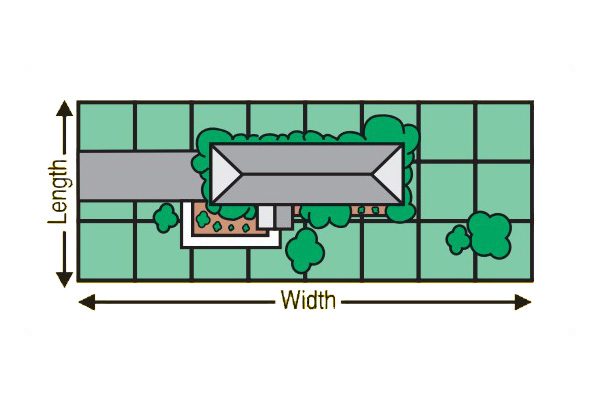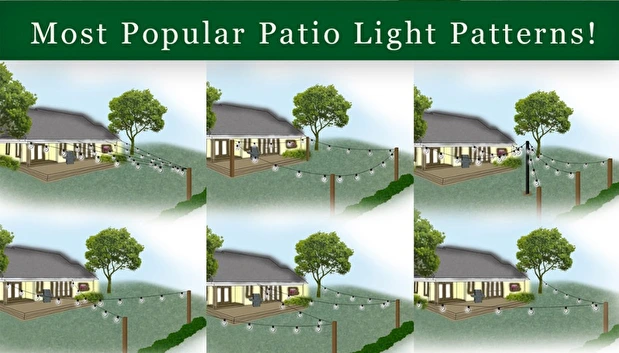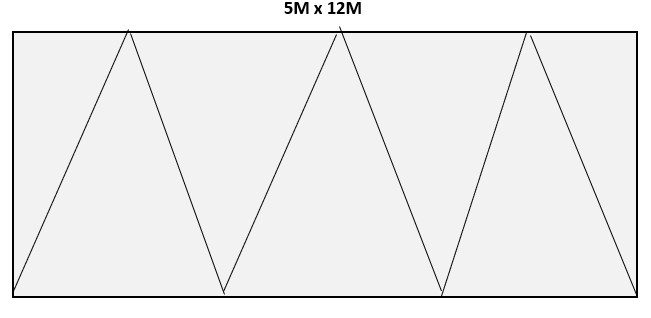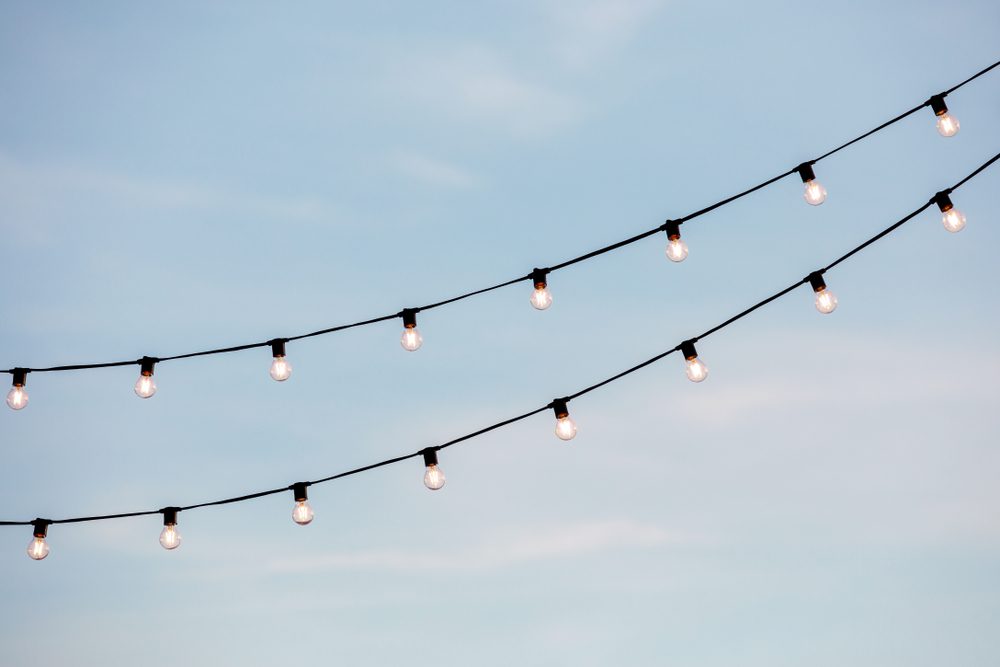How many metres of festoon lights should I get? This is one of the more common questions that we get here at Mr Festoon Lights and the way to answer it is to first determine a few pretty straight forward things.
1. The size of the installation area
The first thing to work out is exactly where you are wanting the festoon lights to be placed and therefore the size of this space. The overall dimensions of the installation area will be one of the major factors determining how many meters of lights that you require.
Most spaces are fairly simple to measure and just a matter of getting out a measuring tape and finding out the length and width of the space. If it’s a really large space and a measuring tape just won’t work you can always simply pace out the lengths to get a pretty good estimate of the length and width that way.
For more complicated areas you may need to break up the area into smaller parts to work it out accurately.
We also advise that if in doubt to not only give us a call on 1300 599 510 to talk it through but also to err on the side of over ordering. As our festoon sets are connectable if you end up with an extra set you can always simply return it for a refund. This avoids being short on the day of installation and possibly missing a deadline for the event or having to call out a professional for a second day costing more money!

2. Determine the pattern of festoon light installation
There are many patterns in which you can install your festoon lights and this will also have an affect on how much you ultimately end up using. The more common designs that we tend to advise and see with installations are:
- Zig Zag Pattern
- Pros to this design is that it gives a good even coverage of light to the space below. It also only requires one power location at the start of the festoon run and therefore simplifies the installation and can be run long lengths from this one location.
- V Shape
- A simple out and back design over a space – perfect when your area does not have a big width so does not need to many back and forth runs.
- Perimeter Pattern
- A design that follows the external perimeter of a space such as a rectangle, square or triangle. Can make it easy to fix the festoon lights if following architectural features such as beams and support posts. However it can mean the central area to a space does not receive as much light so can get darker towards the middle of the area itself.
- Central fan out pattern
- Often people would like the festoons to fan our from a central location like fingers on a hand or from a central pole in the middle of a space out in all directions. This is a great looking design and one of our favourites however it does come with some more complexity in the installation as you essentially end up with several runs that each require a power source so there may be cutting and joining required by a qualified electrician.
- Complex Patterns
- Some patterns can become quite complex and this is all possible however just bare in mind that generally the more complex the more cost will be involved.

There really is a lot of options when designing the layout of the festoon lights but its always worth considering and factoring in a few things:
Budget – Simple designs are more cost effective and tricky ones will generally require the help of a professional with installation.
Power source locations – Think of how you will get power to the start of your festoon run.
Structural support locations – Where will you fix the festoon lights too? Do you have some already existing features such as trees, walls or poles etc..
3. How dense should I hang the Festoon Lights
The last factor we will consider is how densely you want to hang the festoon lights. Personally we feel there is a happy medium to the question “how dense should they be”?
You want to have enough lights so that firstly you get the desired amount of light levels for the space and secondly so that the beautiful decorative feature of the festoon lights stands out.
If you go with too little you run the risk of not having enough light to fill the space and also end up with a lacklustre decorative affect.
Conversely if you go too much you could end up having very high light levels that spoil the ambience and end up looking like a jumbled mess of electrical cables everywhere.
For these reasons its best to go somewhere in the middle to get a decent level of lighting and effect without going overboard or underwhelming.
To help out I will use an example of one of the more common designs we might get such as the zigzag. Lets say you had a space that was 5M x 12M and you wanted to zigzag over the top of this space. We would generally recommend using a spacing of about 4M between each zig and zag to give good coverage and effect but not being too dense to cause high light levels and messy cabling.

So in this example below we then see we get 6 runs of festoon lights which when we account for the slight angle across the 5M span gives approx. 6M for each run to give a total of 36M of festoon lights (6 x 6M = 36M).
4. If in Doubt Sketch it out

If you are still in doubt it always helps to sketch it out roughly with a sheet of paper and pencil, much like in the example above. This can certainly help with designing the layout of the festoon lights and gives a good idea of ultimately how much length you will need.
Just pop in dimensions and what you are planning and you can quickly and inexpensively get an idea of how the layout will look and make changes if something doesn’t look right before wasting time and money on the actual installation.
On this note we love to see sketches of your layout as well so if you are trying to figure out layout and lengths it really makes our job easier if we see a layout and can then advise on any changes to consider or just give you some added comfort knowing that you are on the right track.
Just send them to us with any questions at hello@mrfestoonlights.com.au

